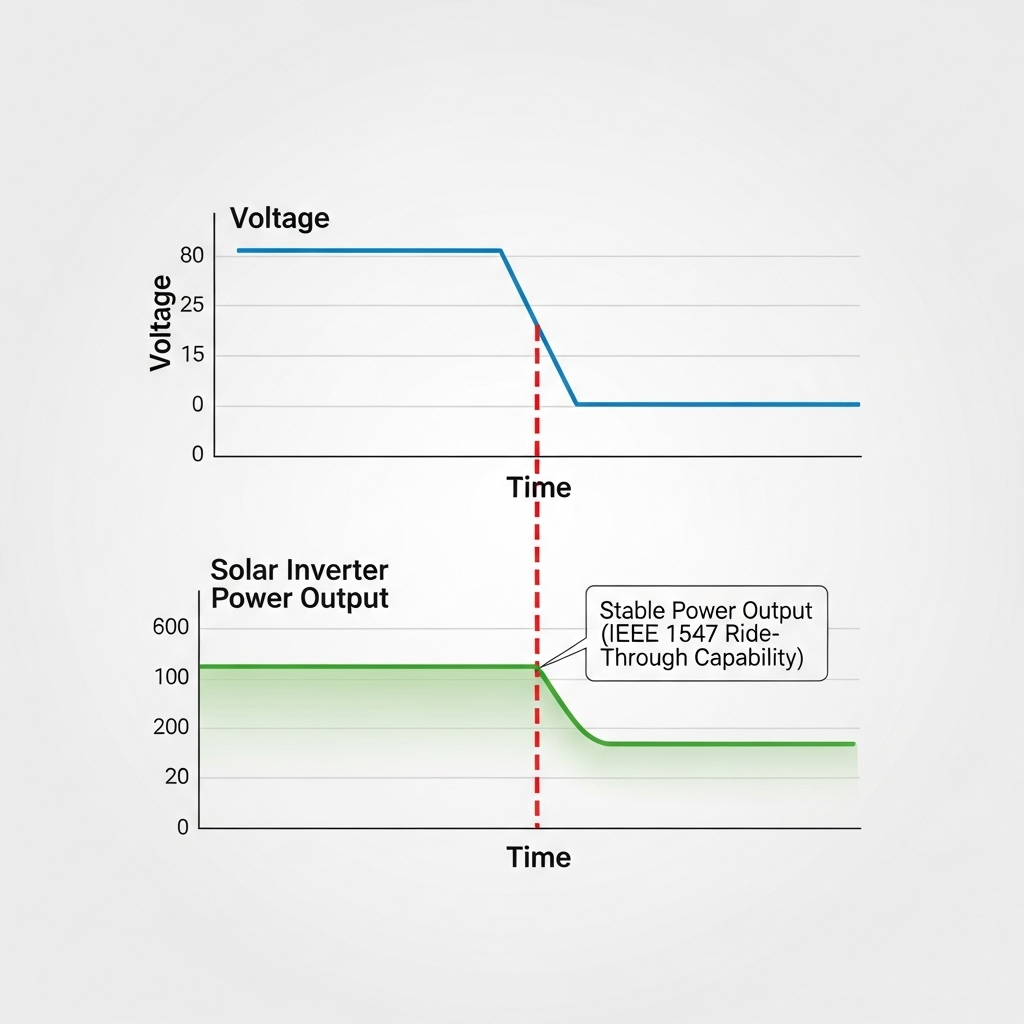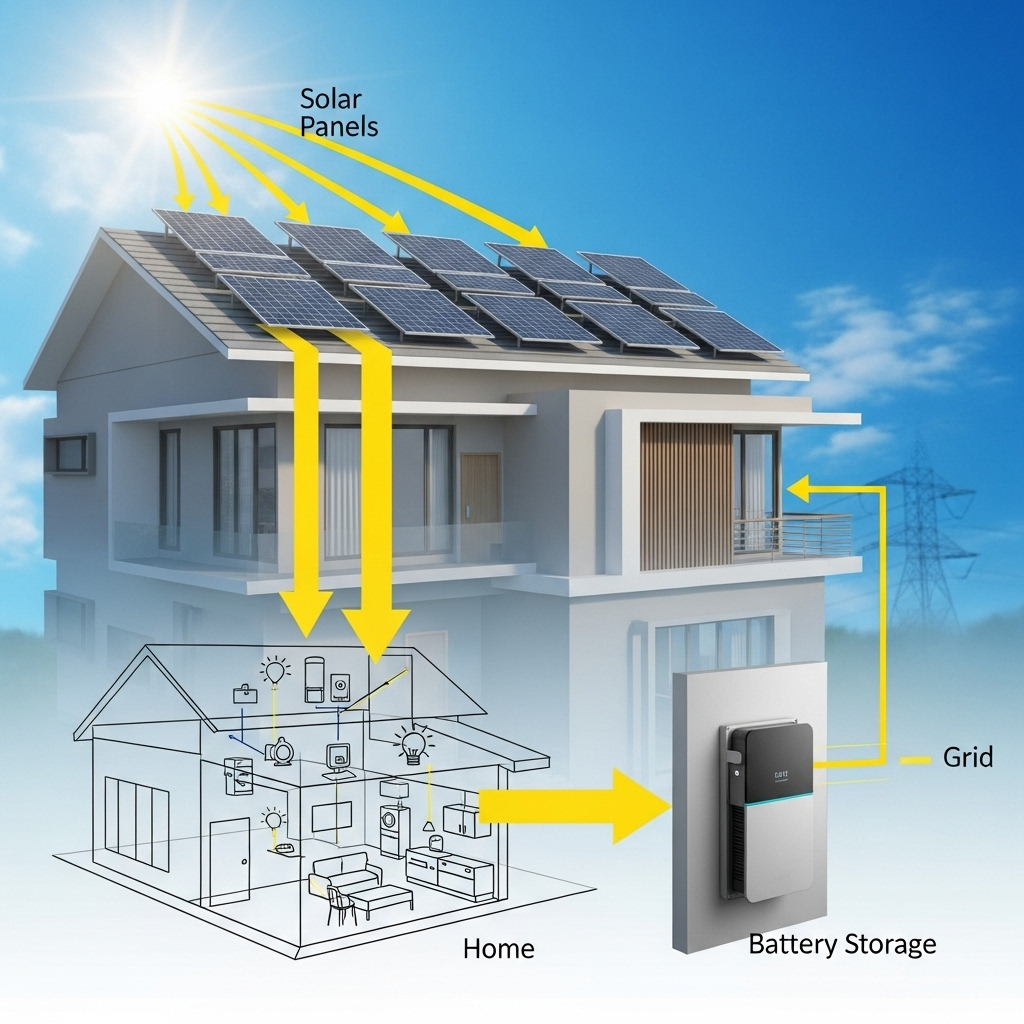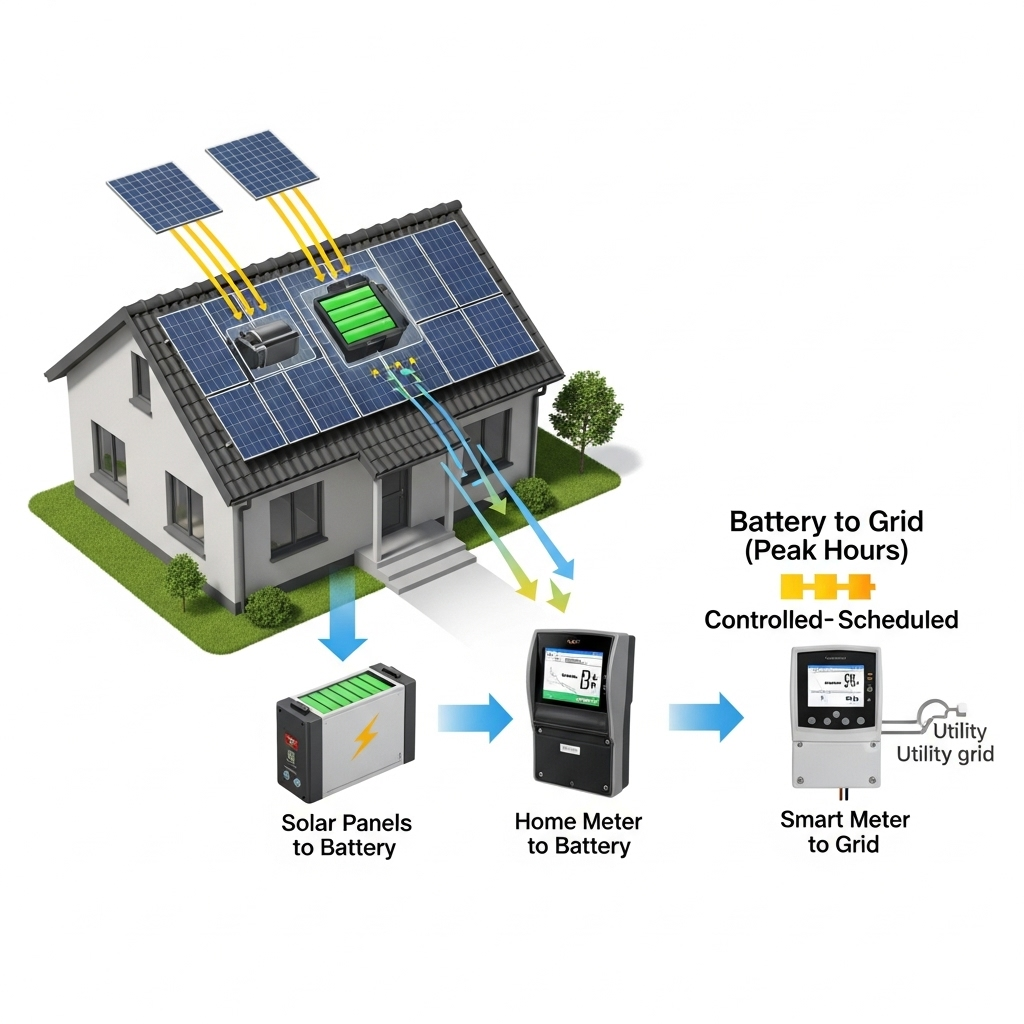Connecting a solar energy system to the grid can sometimes feel like a complex puzzle. You have the panels, the inverter, and the desire for energy independence, but the final step involves navigating utility requirements. A key piece of this puzzle is a standard known as IEEE 1547. Properly understanding and applying its settings can significantly reduce delays and streamline your grid connection process.
What is IEEE 1547 and Why Does It Matter?
Think of IEEE 1547 as the universal rulebook for connecting Distributed Energy Resources (DERs), like solar and battery storage systems, to the electrical grid. It ensures that your system operates safely and reliably without disrupting grid stability. Utilities across the country base their own interconnection requirements on this foundational standard.
From a Simple Rule to a Dynamic Standard
The original version of this standard, from 2003, was straightforward: if there was a problem on the grid, solar inverters were required to disconnect immediately. As more solar came online, this simple 'trip-off' approach became a risk to grid stability. A large-scale disconnection could create a bigger problem than the initial disturbance. The updated standard, IEEE 1547-2018, transforms inverters from passive participants into active grid supporters. According to a report from the International Renewable Energy Agency (IRENA), this evolution was necessary to manage the growing number of renewable energy systems and ensure grid reliability.
The Goal of Standardization
A unified standard like IEEE 1547 creates a predictable environment for everyone. Manufacturers can design inverters that meet a consistent set of technical requirements. Installers can learn one set of core principles that apply across different service territories. This reduces confusion, lowers equipment costs, and ultimately accelerates the adoption of clean energy. It provides a clear technical baseline that authorities governing interconnection requirements (AGIRs) must follow, even as they add their own local specifications.
Key IEEE 1547 Settings for Grid Support
The 2018 update introduced several 'smart' functions that allow inverters to actively help the grid. Understanding these settings is crucial for passing utility inspections without issues.
Voltage Ride-Through (VRT): Keeping Your System Online
Voltage Ride-Through dictates how an inverter should behave during voltage fluctuations on the grid. Instead of disconnecting, the inverter must 'ride through' temporary sags or swells.
- Low Voltage Ride-Through (LVRT): If grid voltage drops for a short period, the inverter must stay connected. This prevents a mass trip-off of solar systems during a minor grid event, which could destabilize the entire network.
- High Voltage Ride-Through (HVRT): Similarly, if voltage temporarily spikes, the inverter must remain online. This capability is vital for grid stability, especially in areas with high solar penetration.
These ride-through capabilities are a fundamental shift, turning DERs into assets that support the grid during disturbances rather than disconnecting from it.
Active Power Control: The Grid's Remote Control
IEEE 1547-2018 requires inverters to have the ability to adjust their power output in response to grid needs. As noted in the Grid Codes for Renewable Powered Systems report, this standard specifies a requirement for all conformant DERs to respond to signals that limit active power. This function allows a utility to, for example, slightly reduce the output of solar systems in an area to prevent overloading a local circuit, ensuring a balanced and secure power system for everyone.
Frequency Support: Maintaining Grid Balance
The grid operates at a very stable frequency (typically 60 Hz in North America). When supply and demand are not perfectly matched, this frequency can waver. Modern inverters compliant with IEEE 1547 can automatically adjust their power output to help push the frequency back to its target. This 'frequency droop' response is another way your solar system contributes to a more robust and resilient electrical grid.
How Smart Inverters Implement IEEE 1547
The hardware that enables these advanced functions is the smart inverter. These devices are the brain of a modern solar installation, managing energy production and grid interaction.
The Role of the Smart Inverter
A smart inverter comes pre-programmed with the functions required by IEEE 1547. It constantly monitors grid conditions and can execute ride-through, power control, and frequency support functions in milliseconds. The U.S. Department of Energy highlights that smart inverters are essential for integrating solar energy into the grid reliably and cost-effectively by providing these vital grid-support services.
Selecting the Right Grid Profile
While IEEE 1547 is the national standard, states and utilities often have specific variations. For example, California has Rule 21 and Hawaii has Rule 14H. A smart inverter allows an installer to simply select the correct 'grid profile' from a menu during setup. This action automatically configures all the necessary voltage, frequency, and ride-through settings to match local requirements, ensuring compliance from the start.
System Performance and Reliability
The effectiveness of these advanced grid functions depends not just on the inverter but on the entire system's design and quality. A high-performance battery and well-matched components ensure the inverter has the resources to respond as needed. The ability to deliver power reliably during a ride-through event is critical. The overall health and efficiency of your components directly impact your ability to meet these dynamic grid requirements. For a deeper look at how different components contribute to system dependability, you can review this ultimate reference on solar and storage performance.
Practical Steps for a Faster Interconnection
Knowledge of the standard translates into action. Following these steps can help you avoid common pitfalls and get your system approved more quickly.
Pre-Application Diligence
Before submitting your interconnection application, check your local utility's specific technical requirements. They will often publish a document that lists the required grid profile and any unique settings. Confirming your chosen inverter is on their approved equipment list can save weeks of back-and-forth communication.
Proper System Configuration
During installation, ensure the correct grid profile is selected in the inverter's settings. An incorrect profile is one of the most common reasons for a failed utility inspection. Double-checking this simple step is critical. Document the selected profile with a photo if possible for your records.
Key Differences: IEEE 1547-2003 vs. IEEE 1547-2018
The evolution of the standard reflects the grid's changing needs. Understanding these changes highlights why modern equipment is necessary.
| Feature | IEEE 1547-2003 | IEEE 1547-2018 |
|---|---|---|
| Grid Disturbance Response | Must trip and disconnect from the grid. | Must 'ride through' voltage and frequency disturbances. |
| Grid Support | Not required to provide voltage or frequency support. | Mandates active voltage control, frequency support, and power control. |
| Communication | No specific communication requirements. | Specifies communication interfaces for monitoring and control. |
| Flexibility | Rigid, one-size-fits-all approach. | Flexible and performance-based, with adjustable settings and profiles. |
Your Path to a Smoother Grid Connection
The IEEE 1547 standard is not a barrier; it is a blueprint for integrating your solar and storage system into a modern, reliable grid. By using compliant smart inverters and ensuring the correct settings are applied, you are not just meeting a requirement. You are installing a sophisticated system that actively contributes to grid stability. This knowledge empowers you to navigate the interconnection process with confidence, minimizing delays and accelerating your move toward greater energy independence.
Frequently Asked Questions
What is the difference between IEEE 1547 and a utility's interconnection rules?
IEEE 1547 is the national standard that provides the technical foundation. A local utility's interconnection rules are the specific implementation of that standard for their service area. The utility's rules will reference IEEE 1547 and specify the exact settings (or 'profile') required for systems connecting to their grid.
Do I need to worry about IEEE 1547 for an off-grid system?
No. IEEE 1547 specifically governs the interconnection of energy systems to the public electrical grid. Off-grid systems, by definition, are not connected to the grid and therefore do not need to comply with this standard.
How do I know if my inverter is IEEE 1547-2018 compliant?
The inverter's technical datasheet is the best place to check. Manufacturers will clearly state compliance with 'IEEE 1547-2018'. Many utilities also maintain a list of approved inverters that meet this requirement. Always verify compliance before purchasing equipment for a grid-tied system.
Can incorrect settings damage my solar system?
It is unlikely that incorrect settings will damage the hardware itself, as inverters have built-in self-protection features. However, incorrect settings will cause the system to fail a utility inspection, leading to significant delays in getting your system operational. It could also cause nuisance tripping, where your system disconnects from the grid unnecessarily, reducing your energy production and savings.
Why did the standard need to be updated from the 2003 version?
The grid has changed dramatically. According to the National Renewable Energy Laboratory (NREL), the massive growth of solar and wind power required a new approach. The old 'must-trip' rule became a liability. The 2018 update was created to harness the capabilities of modern inverters to support the grid, improving reliability for everyone as we transition to more renewable energy sources.





Leave a comment
All comments are moderated before being published.
This site is protected by hCaptcha and the hCaptcha Privacy Policy and Terms of Service apply.